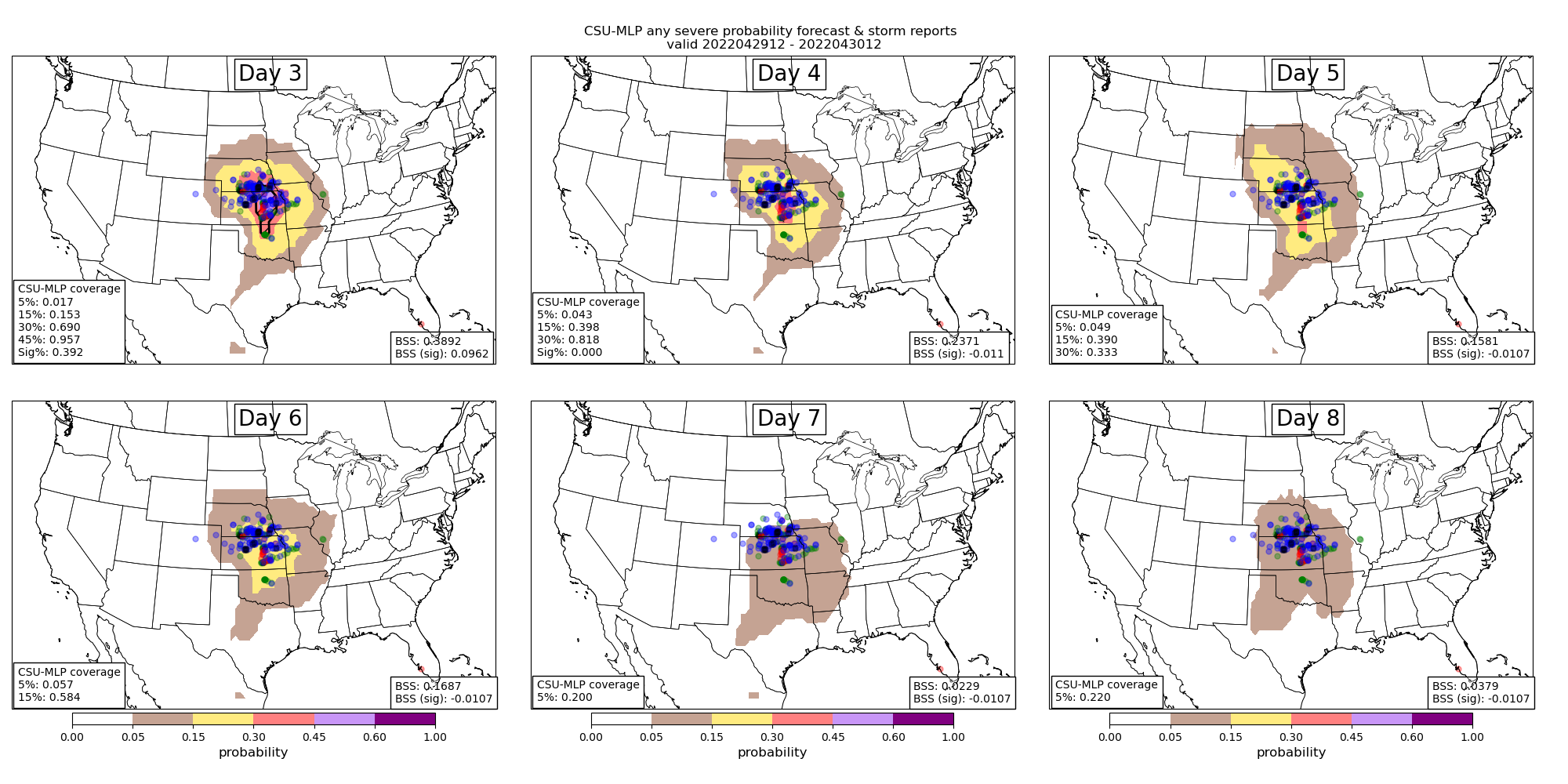Medium-Range Severe Weather Forecasting with Machine Learning
Operational medium-range forecasts of severe weather (i.e., days 4--8) are often produced after careful evaluation of global numerical weather prediction model output. Forecasts generated by Storm Prediction Center forecasters often under-forecast severe weather events as a result of lack of confidence in forecast solutions, or general lack of predictability in weather at these lead times. Hill et al. (2020) demonstrated a machine learning (ML) solution that could outperform human forecasters at days 2 and 3 lead time. This project aims to extend the machine learning-based prediction system to the medium range to provide an additional piece of valuable forecast guidance for operational forecasters.
Initial development and analysis is underway, but early results suggest that the ML system is capable of reliably forecasting severe weather out to day 8, particularly when considering the continuous probability distribution. In particular, forecasts are considerably more skillful and resolute when lower-probabilities are included in the skill metric computations. Comparisons with the SPC's operational products further suggests that SPC underforecasts severe weather (the ML system has a slight underforecast bias as well) and their skill could be improved by increasing the size of their day 4--8 outlook contours.
Additional details about the model system and early results from our evaluation are documented in a new preprint (Hill et al. (2022)).

Figure: Example day 3--8 forecasts (top left to bottom right) from the ML prediction system with probabilities contoured consistent with the colorbar. Severe weather reports (local storm reports) are encoded as blue, green, and red dots for wind, hail, and tornadoes, respectively. Fractional observation coverage and Brier Skill Score (BSS) statistics are computed for each forecast and included in the bottom left and right corners of the panels, respectively.